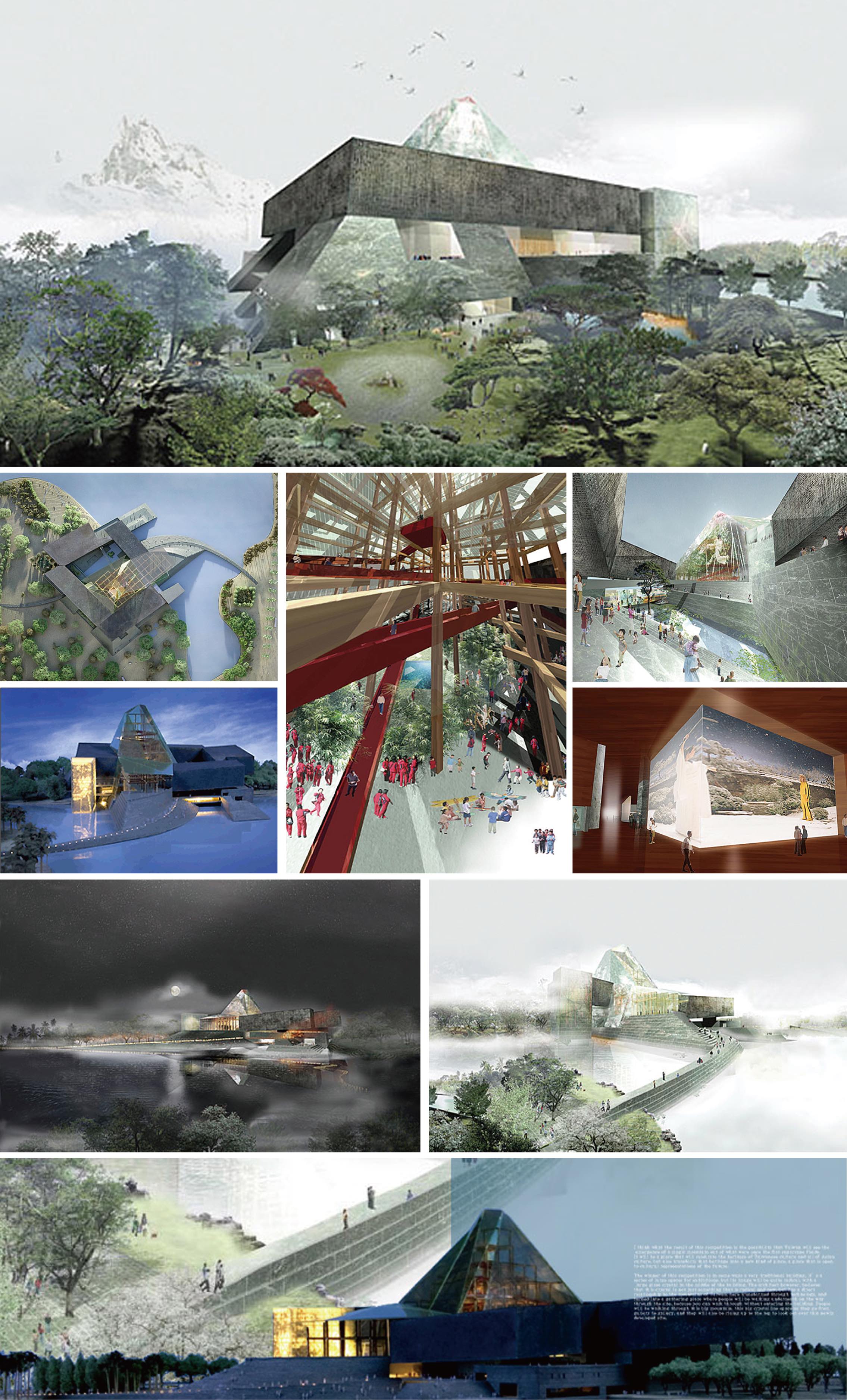1970年代以來,尋找台灣文化身分認同的工作進入了另一個階段。外交上的困境終結了國民政府宣稱擁有全中國代表權的神話,並迫使國民政府和台灣人民面對台灣身份認同的質疑與挑戰。此時,美國自1960年代以來對現代主義的反思,以及地域主義和後現代主義等新理論的興起,為台灣學術界對自身文化主體性之追求與對現代性之批判提供了嶄新的工具。建築學者開始研究台灣的傳統建築,試圖尋找台灣建築之主體性。然而,1970年代台灣的建築實踐仍然是由建築現代主義所主導。直到1980年代,風土元素和後現代歷史主義首次引入台灣。一方面大量運用在房地產市場上,同時也引導了宜蘭縣政府與如謝英俊、象集團等建築團隊所打造的「宜蘭厝」和「冬山河親水公園」。2000年後,民進黨政府也採用類似方法來建構台灣認同。總統府前廣場競圖成功地引發了公眾對台灣過去和未來身份的討論。九二一大地震後所推動的新校園運動,則是將參與式設計方法和教育改革理念引入了學校重建中。此外,透過舉辦「地景計畫」與「門戶計畫」國際競圖,以重塑台灣地景面貌的方式,在國際上豎立新的台灣形象。而故宮南院的興建,更是透過對故宮在亞洲文化中的重新定義,建立起台灣文化的主體性與自明性。
Since the 1970s, the search for Taiwan ’s cultural identity has entered another stage. Diplomatic dilemmas put an end to the claim that the KMT government was the only legitimate representative of China. The government and its people are forced to confront the challenging issues of Taiwan’s identity. During this period, critical attitudes towards modernism began to emerge in the U.S. with the rise of new theories of regionalism and postmodernism. These have provided academics in Taiwan with new tools and methodologies for its pursuit of cultural subjectivity and its criticism of modernity. Architects initiated investigations of traditional architecture in Taiwan searching for its architectural subjectivity and autonomy. However, architectural practice in Taiwan in the 1970s was still dominated by architectural modernism. In the 1980s, vernacularism and postmodern historicism were first introduced to Taiwan. These were widely appropriated in speculative real estate projects. Vernacularism also inspired Yilan county government together with architects Ying-Chun Hsieh and Team Zoo in constructing several Yilan Houses and The Dongshan River Water Park. After the 2000’s, the DPP (Democratic Progressive Party) administration also adopted a similar method to forge a Taiwanese identity through architectural competitions and projects. The competition for The Capital Plaza successfully triggered public discussion on the history, the future, and the identity of Taiwan. The New Campus Movement after the 921 Earthquake introduced participatory design methods and educational reform concepts into school reconstruction. In addition, by organizing international architectural competitions, a new image of Taiwan has been established internationally through the reshaping of architectural landscapes and gateways of Taiwan. Finally In the planning of the Southern branch of The National Palace Museum, the Museum’s cultural role was reimagined. And with the construction of the museum, a new subjectivity and autonomy of Taiwan’s cultural identity has been established.
